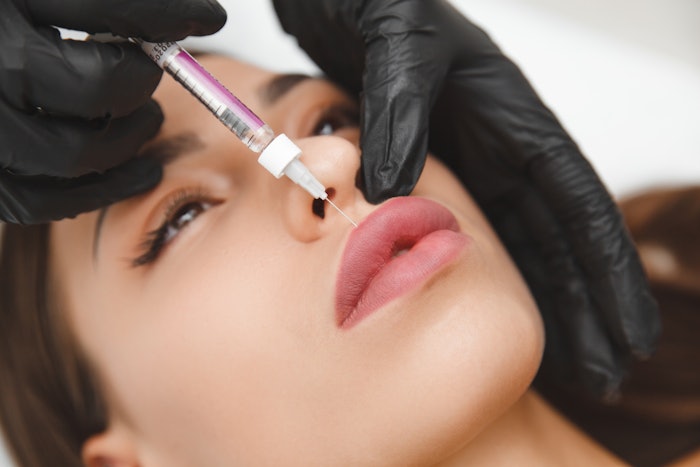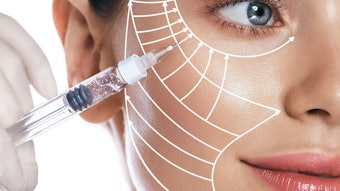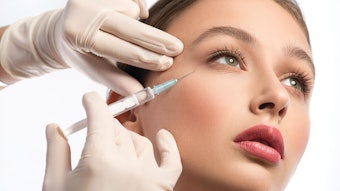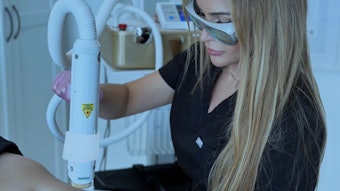
What started as a trickle with Kylie Jenner’s announcement that she had removed her lip filler in 2018 has turned into a flood, sweeping through the world of aesthetics. The procedure is dominating TikTok, having received 140.1 million views at this point. Jenner’s announcement was followed by other celebrities such as British influencer Molly-Mae Hague, who announced she was having her filler dissolved in 2021. While Jenner and Hauge hinted at the early stages of shifting attitudes towards beauty standards, filler dissolving has become one of the biggest trends in 2023, representing an entire cultural shift.
This shift is largely a reflection of the role that beauty standards play in influencing cosmetic procedures. The obsession “pillowy” beauty standards, which focused on full, puffy lips and cheeks, has changed into a desire for a more natural and sleek appearance, referred to in popular culture as the “snatched” look. This has resulted in many people going to their practitioners to reverse some of their previous alterations in favor of ones to achieve a look reflective of the new “snatched” beauty trend. As British makeup artist and beauty influencer Matthew James expertly put it, “Everyone wanted to look like Kylie Jenner. Now they want to look like Bella Hadid.”
Related: Facial Liposuction Appeals to Clients Desiring Slimmer Facial Features
3 Reasons Patients Get Filler Dissolved
1. Complications/Medical Emergency: There are times when patients need their filler dissolved due to complications from getting filler in the first place. Rare filler side effects and complications such as filler ending up in a blood vessel or compromising the health of the skin must be addressed immediately to avoid more serious complications like skin necrosis. In these situations, the injector needs to be confident in how to handle the situation and keep the patient calm and confident in their abilities. Thankfully, complications like this are quite rare.
2. Social Pressure: Outside pressure from family and friends can also influence people’s decision to get their filler dissolved. The patient may have people in their life that reject their cosmetic enhancements because their lips or other area with filler appear unnatural or over treated. This is certainly an element of the current filler dissolving trend, as people are trying to attain a more natural look. According to triple board-certified Manhattan surgeon and founder of Kassir Plastic Surgery, Ramtin Kassir, M.D., “People want to look more snatched without drawing attention to themselves, so they’re asking for very elegant lips and refined jawlines without a lot of volume.”
3. Personal Choice: This is the most common reason for patients wanting to get their filler dissolved. This involves the patient not liking the way their filler makes them feel aesthetically and want to get it removed for good or to restart the process with a new round of filler, so they can opt for a more natural look. As fillers have grown more and more popular over the years, people began over-injecting filler to the point where their lips looked too big and unnatural.
One contributing factor is a confusion over how long filler actually lasts. Patients go in for another filler injection thinking that their previous injection has worn off, when in fact they still have filler in their system, leading to a double dose of filler. “Patients often get put on a filler injection schedule based on how long we think the filler is advertised to last. However, what we don’t realize is that it can last much longer than we think. In many cases, patients don’t know when to stop, and many injectors don’t know when to just say no. Over time, over-filling lips, cheeks, chin, etc. can lead to asymmetry, bumps and an unnatural appearance and patients end up wanting to go back to looking like themselves,” says Eman Abdallah, D.O., founder of Emana Medical in Beverly Hills, California.
Dissolving Dermal Fillers
The dissolving procedure is recommended for patients that have had their filler procedure one to two years prior, continue to dislike the look of their treatment and still have the same filler remaining in their system. Enough time has passed at this point that the remaining filler in unlikely to resolve naturally.
Not every filler can be dissolved. Only pure hyaluronic acid (HA) fillers (Juvederm, Restylane, etc.) can be dissolved. Our bodies naturally produce HA, which is dissolved and replaced every few days. HA fillers are made up of HA molecules that have been chemically joined together.
Hyaluronidase Enzyme
Our bodies also produce an enzyme called Hyaluronidase, which assists in the natural dissolving process of HA. Dr. Shauna Watts, owner of YOU by Dr. Shauna Watts – “The great thing about Hyaluronic acid dermal fillers is that they can be dissolved. This is done by injecting a form of the same enzyme [hyaluronidase] that our bodies naturally use to dissolve our own hyaluronic acid.” Hyaluronidase has been used to dissolve HA fillers for almost 20 years and can be used to dissolve any HA filler, whether it is a lip filler, fillers in cheeks or under eyes, among other areas. Upon injection, the hyaluronidase breaks up the HA through a process called hydrolysing, in which the hyaluronidase adds water to the polysaccharide chain within the HA filler, splitting these sugars into small components so they float apart, speeding up the dissolving process that would take place naturally over time.
Dissolving Procedure
The entire procedure only takes around 15 minutes. Before beginning, however, it is vital to perform a patch test to make sure the patient won’t have an allergic reaction to the hyaluronidase. This involves injecting a small amount of the solution into the patient’s forearm. Once you have confirmed that the patient is not allergic, the skin is sterilized and practitioners are advised to apply numbing cream to the chosen area to reduce pain and discomfort. Depending on whether the patient wants the entire amount of their filler dissolved or not, and how old or stiff the filler is, the dose used may be higher or more concentrated, or alternately, the enzyme solution may first be diluted before injecting. The dissolving solution is then injected into the area where the dermal filler was initially injected, getting it as close to the HA filler as possible. The solution is massaged into the skin, with the pressure being applied depending on how much filler the patient wants dissolved. Finally, the area is once again cleaned and after care balm or cream can be applied.
While the filler may be dissolved in one session, some patients may need to return for more than one session to achieve their desired results. Practitioners should also let their patients know that while most people will notice a difference within two days, it could take up to two weeks for them to see the full effects of the procedure. The area may appear fuller at first after the procedure due to swelling and volume added by the dissolving fluid. However, the added volume should subside after a few days and the area will go back to its normal state within two weeks. According to Watts, “However, the time it takes for dermal fillers to dissolve does depend on a few things. If the dermal filler is “stiffer” and has more chemical bonds, it may take longer to dissolve than the waterier types of dermal fillers that have fewer chemical bonds.”
Possible Risks & Side Effects
Patients may experience bruising, swelling and some discomfort following the procedure. The primary risk associated with dissolving filler is the possibility of an allergic reaction, which is why doing a patch test prior to the treatment is important. According to 2020 research, the risk of patients having an allergic reaction is generally very low (0.05%-0.69%), with fewer than 0.1% of patients experiencing any itching or swelling caused by the hyaluronidase. However, the chances of a patients having an allergic reaction increase with doses of more than 100,000 IU, with the chances growing to just over 31% for doses of 200,000 IU. Starting with the lowest possible dose is advised to minimize the chances of an allergic reaction. Practitioners can help avoid patients developing an allergy by minimizing the total amount used and number of times the patient’s body is exposed to hyaluronidase. Ideally, physicians should use the smallest amount necessary in the fewest possible sessions rather than spreading the treatments out, as repeated exposure can result in the development of an allergy to the hyaluronidase enzyme.
There is some debate over whether using too much hyaluronidase may result in over-dissolving, which could potentially break down too much filler in addition to the body’s own stores of HA. While this can lead to the patient losing more volume than they want, leaving the area somewhat deflated, the body will eventually replace the loss of any natural HA and the deflated area should go back to its normal volume. Patients can, of course, get a new filler treatment to add some lost volume, but it is advised that they take a break in between getting their filler dissolved and adding new filler to first see how the area settles. Ideally, practitioners should wait two weeks before re-injecting filler, as this is the maximum amount of time it can take for the effects of the dissolving enzyme to subside.
The "Snatched" Look
The filler dissolving trend is ultimately a kind of first step towards transforming from looking "pillowy" to "snatched.“ The trend patients are turning to next to achieve a more angular, chiseled appearance is buccal fat removal. Beverly Hills plastic surgeon Sagar Patel, M.D., explains, "You build the mountain with filler, and you dig the valley with buccal fat removal.”
To read more about this element of the "snatched" beauty trend, check out our recent investigation into the buccal fat removal trend: Buccal Fat Removal: What is it and Why is it so Popular?











